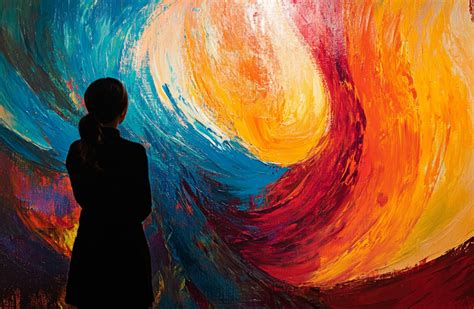
The Psychology of Color in Abstract Art: Meaning, Emotion, and Expression
In abstract art, where recognizable objects and figures disappear, color becomes one of the most powerful tools of expression. Unlike representational art, which tells stories through images, abstract painting communicates directly through shapes, textures, and—most importantly—colors. Every hue carries psychological weight, capable of evoking emotion, shaping mood, and guiding interpretation. From Rothko’s immersive color fields to Kandinsky’s theories on color and sound, the psychology of color has been central to abstract art since its beginnings.
Why Color Matters in Abstract Art
- Direct Emotional Impact – color bypasses logic and speaks to our feelings.
- Universal & Cultural – some color associations are shared globally, while others are culturally specific.
- Compositional Power – color guides the eye, creates harmony, tension, or rhythm.
- Spiritual & Symbolic – many abstract artists saw color as a way to connect with the unseen or transcendental.
Key Color Meanings in Abstract Painting
- Red – energy, passion, danger, life force.
- Blue – calm, spirituality, infinity, but also melancholy.
- Yellow – joy, optimism, light, intellect.
- Green – growth, renewal, balance, nature.
- Black – mystery, power, void, sometimes despair.
- White – purity, emptiness, transcendence.
- Purple – creativity, luxury, mysticism.
👉 Abstract artists often used these associations intuitively, layering meaning through combinations.
Artists and the Power of Color
-
Wassily Kandinsky
- Believed colors were connected to sounds and emotions.
- Described yellow as “the sound of a trumpet” and blue as “the sound of a cello.”
-
Mark Rothko
- Created vast fields of color designed to evoke deep spiritual and emotional responses.
- His red, black, and maroon canvases often confront viewers with raw intensity.
-
Piet Mondrian
- Reduced art to primary colors (red, yellow, blue) to express universal harmony.
- His grid-based compositions explore balance and order through color.
-
Yves Klein
- Famous for his “International Klein Blue,” a deep ultramarine that sought to capture the infinite.
How to Use Color in Your Own Abstract Painting
- Start with an emotion or mood you want to express.
- Choose colors that align with that psychological intent.
- Experiment with contrast vs. harmony—opposites can create energy, while analogous tones calm.
- Consider the scale of color fields—large areas can immerse, while small accents can punctuate.
- Trust intuition: in abstract art, color is often a direct extension of the artist’s inner world.
Conclusion
The psychology of color is at the heart of abstract art. From Kandinsky’s symbolic theories to Rothko’s immersive canvases, colors carry the power to move, unsettle, uplift, or silence us. For both artists and viewers, exploring color in abstraction is a journey into the emotional core of art itself.
Inspired by the pioneers of abstract art, my collection brings bold color, texture, and emotion to life. Each piece is designed to spark personal reflection and invite viewers into a unique visual experience.
https://emotionincolor.com/collections/original
